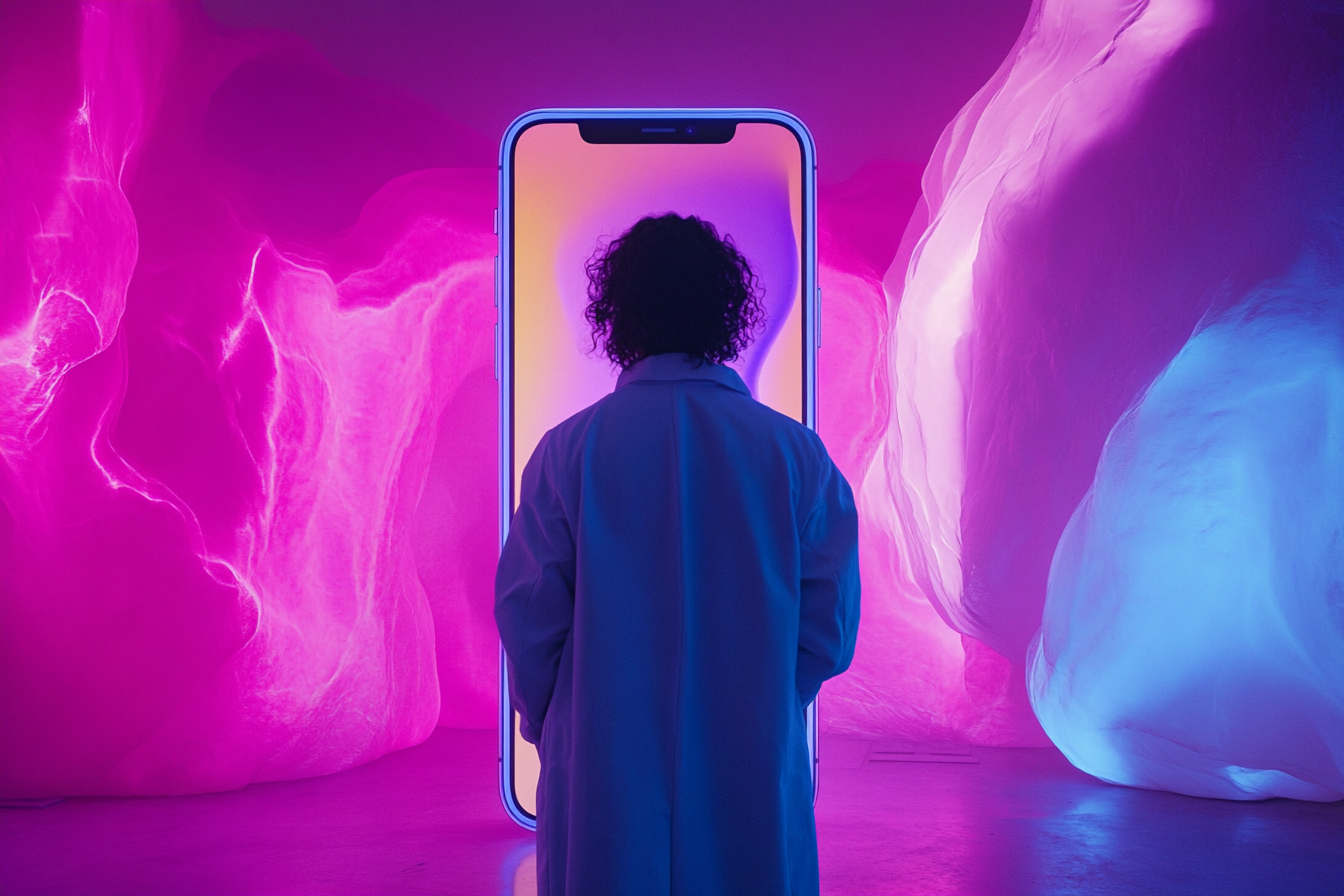When you sit down and talk with a designer, graphic artist, or anyone who does anything artistic for branding, you will find that one of the earliest considerations that is made is… the color palette.
I know, I know. You probably thought it was something like the logo or symbol. Something about how a simple circle represents the “eternity of life” or the “recapturing of beauty”... or, you know, something equally as grandiose.
But not all artists are as theatrical as we might sometimes assume. In fact, when it comes to color and color palettes… they are pretty scientific.
Color changes moods… and moods, ultimately, drive conversions (i.e., patients coming into your practice).
“The chief function of color should be to serve expression.” - Henri Matisse
We’ve talked about the importance of color plenty before — specifically in regards to branding — but we thought we would take a little more time to explain precisely why your decision on color can have long-lasting effects on your business and how you should be going about choosing and implementing your color options.
So, let's dive in to the idea of color theory and it's effect on your business.
What Is a Color?
Let’s simplify this definition: the way that an object reflects or emits light toward your eyes is color. A stop sign reflects red light, the sky reflects blue light, the sun emits yellow or orange light… you get the point. Most of us have a basic understanding of what light is.
But what you might not know is that we can only see a portion of the light that exists around us:

Nevertheless, even within the limited spectrum of light we are able to access, there is a ton of opportunity for expression. Interestingly enough, each color in the observable light spectrum will elicit some kind of emotion from a human audience.
This is where color consideration begins: how will the hues and tones you choose impact the moods and impressions of your audience?
Color Impacts
Every color expresses something to people who observe it. We might not all have the same exact responses, but it is safe to say that colors tend to follow certain patterns, whether by nature or by association.
These associations, responses, and reactions are what we refer to as “color impacts.”
There are hundreds of color studies and a ton of breakdowns available if you really want to research the effect of color on the psychological state. Here are a couple of really interesting places to start if a deep dive is what you are looking for:
But, for those of you who aren’t interested in learning about the complexities of color psychology, here is a quick breakdown of the major color options and some standard emotions associated with them:

Is this list comprehensive? Absolutely not. There are a hundred other associations that can be made with any of these colors. Take black, for example. Many people would also claim that black represents formality, sophistication, and maybe even security or mystery. It could represent emptiness, cohesion, or evil. The list goes on and on and on and on…
Use the graphic above as a starting point, not the end destination.
When Incredible designs a new brand or color palette, every color is on the table in the beginning. Then, a long-form vibe check — formally known as a discovery exercise — is conducted. This allows the designers to get a clear idea of your practice identity. Based on that information (and your preferences) colors are chosen that work toward your goals.
Need some help getting it? Here is some sage wisdom for you: As someone who decides on a lot of colors for medical aesthetic businesses, I choose color based on the energy of the project.
If we are discussing your medical practice and you say you want to be a place that feels warm and welcoming to patients, then that sort of activates certain palettes.
These rules are never absolute, but if you want to be a cutting-edge leader in the aesthetics industry, you should consider something like black, red, or orange to establish your credibility and generate excitement around your image. If you want people to feel comfortable when they walk into your practice, green or even, dare I say, a tasteful pink or blue might be a closer fit for your needs.
It is all about supporting your goals as a practice — so think carefully about what your colors will invoke.
Establishing a Wow Factor
We feel very strongly about one thing: you shouldn’t go with the perennially overused blue and white combo. We know those are colors strongly associated with the medical field… but you have to try and be a bit more creative. You need to find a wow factor for your practice.
Take Incredible, for example: We are bold, unique, adventurous, even. We definitely weren't afraid to be pink adjacent with our confidence. For us, magenta communicated those traits, which is why it continues to serve as one of our primary brand colors.
Who are you? Just another practice with a blue and white logo? (No offense to our blue- and white-logoed friends.)
Or are you a trendsetter, someone who stands out in a crowd to your audience? Someone patients will remember and continue to turn to on their aesthetic journey?
Color Palettes
Strap in, folks. We are getting a bit technical here. Every brand has a main brand color, but there are typically one or two other colors that serve as co-primary or secondary branding colors. Choosing them is… well, it gets a little complex.
In color theory, there is something known as color combination. There are a lot of them, but the main ones are complementary, monochromatic, analogous, triadic, or tetradic color combinations. Here is a breakdown of the most used:
Complementary — Two colors on opposite sides of the color wheel.

Monochromatic — Three shades or tints of the same color.

Analogous — Three colors that touch each other on the color wheel.

Triadic — Three colors evenly spaced on the color wheel.

Tetradic — Four colors evenly spaced on the color wheel.

Canva has provided one of the best and most accessible tools for creating your own color palette with any of these options. Simply navigate to their color wheel tool, select a color combination you want to experiment with and drag the indicator on the color wheel to a color you know you want to include.
The tool will even let you export your palette when you are finished and provide all of the color information you’ll need to keep things consistent:


If you are embarking on your branding journey alone, take advantage of this tool to help you build your branding. Of course, this won’t help you with all the other work, like determining the best colors for your practice, but it can alleviate some of the burden.
Color Implementation
Once your color palette is developed, you will be off to create imagery to represent your brand based on your selections. Here is a quick and easy tip to follow: use the 60-30-10 ratio.
This ratio is a standard for any artistic design, from branding to interior decoration. It states that 60% of your project should be a singular color, usually a neutral or solid color that can serve as the canvas itself.
Then, use 30% of the project on a primary brand or focus color. This would be one of the options from your palette. Make sure it isn’t too loud or dominating — you’ll need this color to make the image feel comfortable.
For the last 10%, you will want a pop of drama. Use a loud, powerful color from your palette in accents such as divider lines, characters, icons—anything that can stand out among the rest of the project.
Simple, right? 60-30-10.

Here is an example of a practice named The SaltFacial. Both of these are good examples of this rule. They have a primary background/canvas color, a strong secondary color, and a branded accent color. The design feels harmonious, and the colors don’t seem to compete but are instead playing together.
This balance is what the 60-30-10 rule tries to ensure. It doesn’t have to be perfect, so don’t worry if you aren’t getting exact percentages — it’s more of a guideline than a hard rule.
It’s More Than a Color
When you take the time to intentionally select your colors and palettes, you aren’t just choosing a color for your brand, you are doing a few things:
- You are broadcasting to your entire audience that your brand is to be taken seriously.
- You are developing deep, emotional connections with potential patients who are looking at your color palette and making assumptions and associations based on what they see.
- You are giving yourself a higher chance of piquing interest in the digital ecosystem and standing out in the noise.
As the audience connects and widens, the conversions — patient signups — will be much more likely to follow shortly thereafter. If you want to learn more about branding, check out some of our branding series in the panel to the right. There is plenty more education to explore.
Too Long? Here's the Short Version
When establishing a brand, the choice of a color palette is crucial as it affects moods and conversions. Colors elicit emotional responses and convey specific messages to the audience, impacting brand perception and engagement. Using tools like Canva and adhering to the 60-30-10 ratio helps in creating harmonious and impactful designs. Thoughtful color selection not only enhances brand identity but also fosters emotional connections with potential clients, increasing the likelihood of conversions.
When establishing a brand, the choice of a color palette is crucial as it affects moods and conversions. Colors elicit emotional responses and convey specific messages to the audience, impacting brand perception and engagement. Using tools like Canva and adhering to the 60-30-10 ratio helps in creating harmonious and impactful designs. Thoughtful color selection not only enhances brand identity but also fosters emotional connections with potential clients, increasing the likelihood of conversions.










